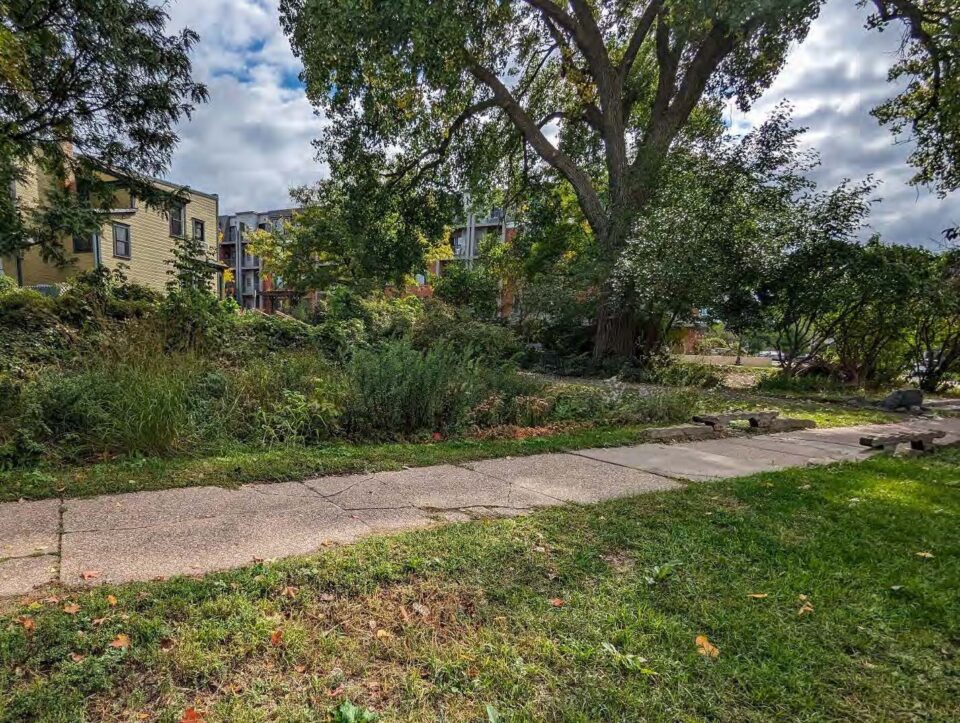Understanding and Improving Green Spaces with Natural Resource Inventories
The landscape of Capitol Region Watershed District (CRWD) used to look very different. Savannas and open prairie grasslands once dominated the terrain – oak trees dotted the landscape, and prairie plants like big bluestem, leadplant, and wild bergamot covered much of the ground. The region was scattered with wetlands and many streams flowed to local lakes and the Mississippi River. Rain soaked into the ground by the long roots of the prairie plants and trees or flowed to lakes and the Mississippi River in the streams.
Today, CRWD is a highly developed area with a lot of paved, hard surfaces like streets, sidewalks and parking lots that don’t allow rainwater to soak into the ground. This makes protecting the remaining green spaces even more critical for clean water and the community. Parks, schools, offices, and even roadsides can provide benefits like water quality improvements, heat island reduction, and wildlife habitat.
Natural Resource Inventories
CRWD recently worked with partners to complete two natural resource inventories (NRI). These documents aim to help watershed districts, the City of Saint Paul, landowners, and community groups understand, protect, and improve the natural resources in the project areas. Both NRIs include project area histories, specific site summaries, management opportunities, and prioritization matrices.
Payne-Phalen and Dayton’s Bluff
CRWD partnered with Ramsey Washington Metro Watershed District (RWMWD), Payne Phalen Community Council, and Dayton’s Bluff Community Council to complete a natural resource inventory (NRI) of 5.5 square miles in eastern Saint Paul. The two community councils plan to incorporate this information into the development of their next District Plans.
The report identifies and summarizes 43 sites that present potential enhancement opportunities.
Swede Hollow Park (site 39) contains over 20 acres of green space plentiful with native mature bur oaks, hackberry, and cottonwood trees. The City’s natural resources team is already removing some invasive species and undesirable plants and replacing them with native species as part of their 2019 management plan. A stream runs through the park, which is fed in part by groundwater, and the historic Phalen Creek, which once ran through the hollow as it flowed to the Mississippi River.
Swede Hollow Café Rain Gardens (site 41) contains two well-maintained rain gardens that capture and clean stormwater from the street and nearby buildings. Native plants like little bluestem, New England aster, and prairie cordgrass inhabit this small but mighty green space. Urban Roots, a local non-profit, maintains the garden, and nearby Dayton’s Bluff Elementary School also uses it to teach students about native plants.
Payne Phalen and Dayton’s Bluff Natural Resource Inventory Report PDF
North End
CRWD partnered with the North End Neighborhood Organization (NENO) to expand an earlier natural resource inventory (NRI) from 2015 to understand the area’s natural resources for future restoration and protection. NENO intends to include the NRI in its next District Plan, which is currently under development.
The report identifies and summarizes 38 sites that present potential enhancement opportunities.
Trout Brook Nature Sanctuary (Site 2) was extensively restored by The City of Saint Paul and CRWD, including daylighting the historic Trout Brook, restoring native plants, and adding additional stormwater treatment. While the City of Saint Paul is still managing some invasive species at the 47-acre site, there are also many thriving native plants and shrubs like bee balm, black-eyed Susan, and red-osier dogwood.
The BNSF Railroad Corridor (Site 25) provides valuable habitat connections to other sites in the report. While currently covered by relatively low-quality, non-native vegetation, the areas alongside the railroad tracks can serve as habitat corridors that allow plants, pollinators, and other wildlife to move more easily between larger green spaces like Marydale Park and Willow Reserve.
North End Neighborhood Organization Natural Resource Inventory Report PDF
Next steps
CRWD created these reports as tools for our partners like the City of Saint Paul, neighborhood councils, community groups, and other landowners. CRWD offers grant programs and technical assistance to encourage the protection and enhancement of green spaces throughout the District. You can visit our Grants page to learn more.




